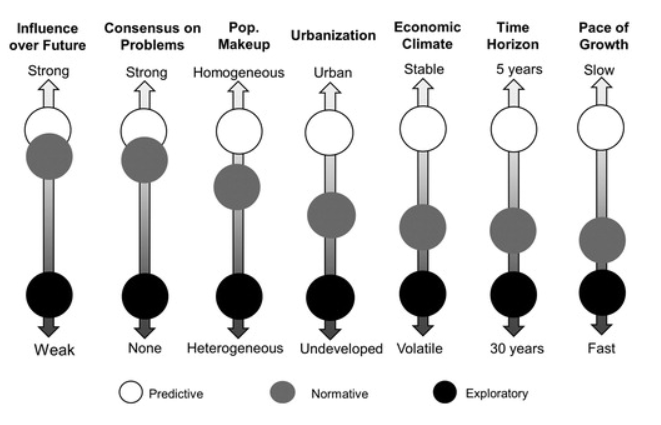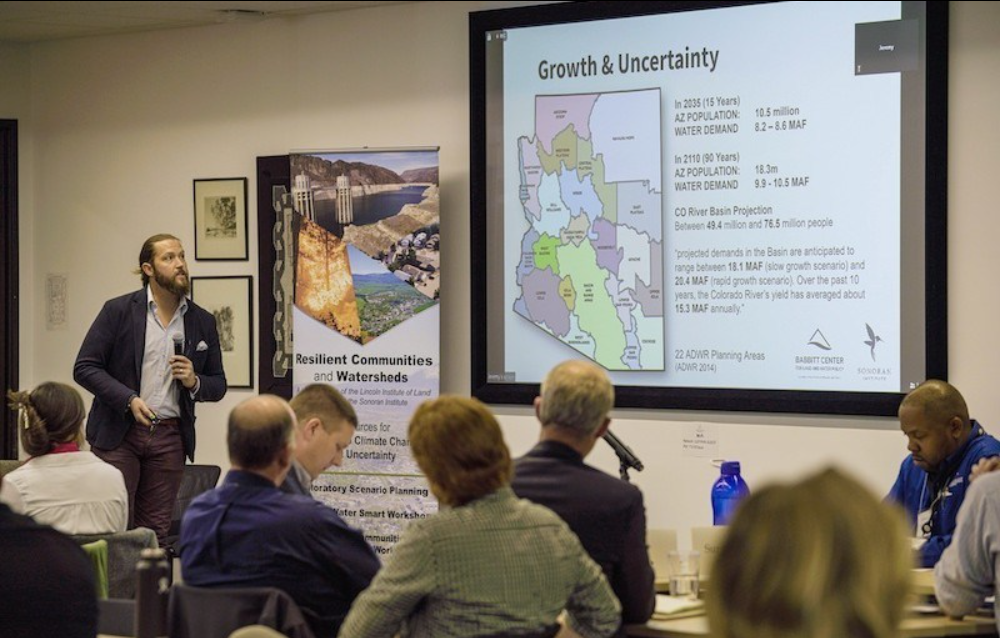NCSG researchers published in JAPA Vol. 86, No. 4
Uri Avin published this article Using Exploratory Scenarios in Planning Practice: A Spectrum of Approaches with Robert Goodspeed, an alumnus of UMD.
Despite growing interest by practitioners in using exploratory scenarios within urban planning practice, there are few detailed guidelines for how to do this. Through the discussion of five case examples, we illustrate different approaches to linking exploratory scenarios to different planning contexts. We conclude by observing that to directly inform a plan, regardless of the specific approach taken, exploratory scenarios in urban planning must incorporate stakeholder values and not only rely on expert judgment and analysis.
Exploratory scenarios are effective for analyzing uncertainty within a planning process. However, exploratory scenarios can be incorporated into planning practice in different ways, ranging from workshops among experts that aim to cultivate general learning to complex projects that result in highly detailed scenarios and recommendations for plans. Practitioners can draw on the cases we present to inspire planning methods for particular projects, taking into account specific contexts and goals.
In the same issue, URPD and NCSG alum Li (Kerry) Fang published this article Tracking Our Footsteps: Thirty Years of Publication in JAPA, JPER, and JPL with Reid Ewing, formerly of NCSG.
We conduct a systematic reading of all articles published in the past 30 years in three U.S.-based general planning journals, Journal of the American Planning Association (JAPA), Journal of Planning Education and Research (JPER), and Journal of Planning Literature (JPL), using latent Dirichlet allocation, a text mining technique. We find that certain research themes remain important in the past 3 decades, such as planning process, planning methods, and land use/growth management, whereas others have lost their prominent status, such as planning theory and planning education. New fields such as food systems have emerged during the study period. Editorial regimes appear to be associated with theme dynamics.
In this study we demonstrate a text mining method to effectively summarize a large amount of text data and track planning researchers’ footsteps in the study of planning issues reflected from published research articles. We identify past and emerging research trends in the studied journals that can help scholars situate their work in the literature and practitioners find collaboration opportunities. It also helps professional associations such as the American Collegiate Schools of Planning (ACSP) and the APA open up new conference tracks and/or specialization groups/divisions so they can reflect the ever-changing interests of their memberships in a timely manner.



